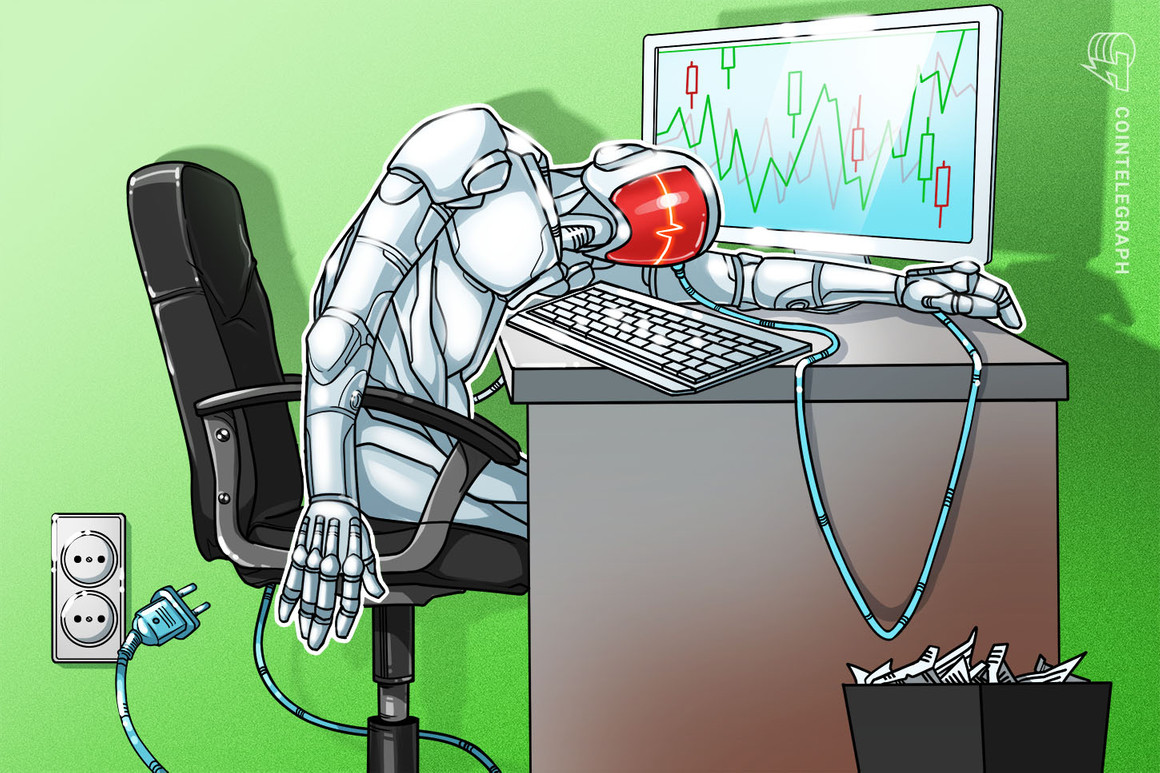
Billions of dollars have flowed into decentralized exchange protocols based on the automated market maker (AMM) model, which bootstraps network effects by incentivizing liquidity with project tokens, thereby creating a self-contained ecosystem of traders and yield earners.
This mechanism has allowed decentralized exchanges (DEXs) to compete for the first time with centralized counterparts, such as Coinbase, which can afford to use cash from their balance sheet to pay for user acquisition (e.g., through sign-up and referral bonuses). As a result, AMMs have been hailed as the cornerstone of decentralized finance (DeFi), spawning multiple permutations and sparking the yield-farming trend that has helped draw billions of U.S. dollars into smart contracts.
Related: The rise of DEX robots: AMMs push for an industrial revolution in trading
But lingering underneath this supposedly solid foundation of this DEX model is a dirty little secret that could be its demise.
The fall of AMMs
AMMs reduce the market-making mechanism for crypto assets to the simplest possible financial primitive: Two liquidity pools are coupled with an exchange rate that naturally adjusts based on relative demand — almost like an ancient merchant standing between two piles of grain and beans, swapping one for the other on request.
The sheer inefficiency of this model means the biggest beneficiaries are not liquidity providers or traders using the network, but arbitrageurs:
- Traders suffer from high gas fees and poor execution. AMMs are siloed from each other and have little to no interoperability, forcing traders in search of deep liquidity to deploy funds across different protocols and blockchains or experience slippage and partial fills.
- Liquidity providers passively sell tokens with rising exchange rates and buy tokens with falling rates, creating impermanent loss when the value of a digital asset falls after it has been purchased from a seller before it's sold to a buyer. So, unlike active market makers on order book exchanges, they can lose out to regular market movements.
- Arbitrageurs, meanwhile, are able to jump in and buy up cheap assets until the pool is correctly priced.
Developers have attempted to patch these problems; tweaking parameters and introducing new features like impermanent loss insurance and third-party interfaces for managing trades. Yet, they have been met with limited success. Impermanent loss is built in — it cannot be completely eliminated, only passed around to other protocol participants who manage the risk by sharing profits and losses.
In the end, the only way to ensure that liquidity providers on AMMs are consistently profitable is by counteracting losses with heavy incentives in the form of newly created tokens.
When buyers disappear as the wave of speculation around a new project ends, the inevitable selling pressure then pulls token prices down, causing liquidity providers to pack up shop and move on to more profitable, freshly launched protocols. Anyone left holding a governance token is only likely to vote for maximal, short-term financial gain — to the detriment of the protocol.
Related: Yield farming is a fad, but DeFi promises to change the way we interact with money
The rise of middleware
As time goes on, the AMM model is being threatened by another intrinsic blockchain limitation: lack of interoperability.
Yield-earning activity spurred by token incentives is outpacing the scalability of the underlying blockchains. This pushes up fees and delays transactions, driving liquidity providers to AMMs operating on new sidechains, layer twos and next-generation layer ones.
Yet, each new blockchain is an island. Moving funds between chains, particularly between the isolated layer twos, can mean being forced to travel back to the homeland of the original layer one, and then making another jump to the final destination. Along the way, yield farmers' harvests are depleted by underlying blockchain fees and delayed by long onboarding queues — not to mention, the headache of keeping track of funds in different locations.
Related: Professional traders need a global crypto sea, not hundreds of lakes
In this rapidly dawning multichain future, middleware chains have a big opportunity to become the first port of call for liquidity.
Interoperable middleware can trustlessly interact with different chains to scope out the most efficient trading routes across multiple liquidity sources — whether from Uniswap pools or central limit order book DEXs like Serum. In this way, all the fun of the fair — the same rides and attractions of layer-one chains — can be available, but without the transaction delays, high fees and interoperability silos. To the end-user, the underlying protocols or platforms providing the liquidity are simply abstracted away through a single user interface, similar to how cryptographic standards like “HTTPS” are abstracted away on the internet.
Related: Is crypto approaching its 'Netscape moment'?
User-centric tokenomics
Without any of the intrinsic limitations of AMMs, layer-two middleware chains are better positioned to accrue value and create sustainable crypto economies that reward all users.
This means moving beyond the incentive structures that power layer-one blockchains, beyond the “utility” and “security” tokens of 2017, and beyond the governance tokens of DeFi.
Related: Life beyond Ethereum: What layer-one blockchains are bringing to DeFi
New tokenomic models are needed that not only reward liquidity providers and validators, but incentivize all users on a network to generate real long-term network value. With this in place, not only will traders flock to middleware to save on fees and to get the best execution, but developers will follow to build DeFi applications that can take direct advantage of the layer-two efficiency, and liquidity providers will come for the most lucrative compensation.
Suddenly, the liquidity wars raging between AMMs on underlying chains will be fought in a new battleground.
This article does not contain investment advice or recommendations. Every investment and trading move involves risk, and readers should conduct their own research when making a decision.
Title: Automated market makers are dead
Sourced From: cointelegraph.com/news/automated-market-makers-are-dead
Published Date: Tue, 22 Jun 2021 10:07:00 +0100
Did you miss our previous article...
https://trendinginthenews.com/crypto-currency/vaneck-files-for-a-new-bitcoin-futures-mutual-fund-with-us-sec






